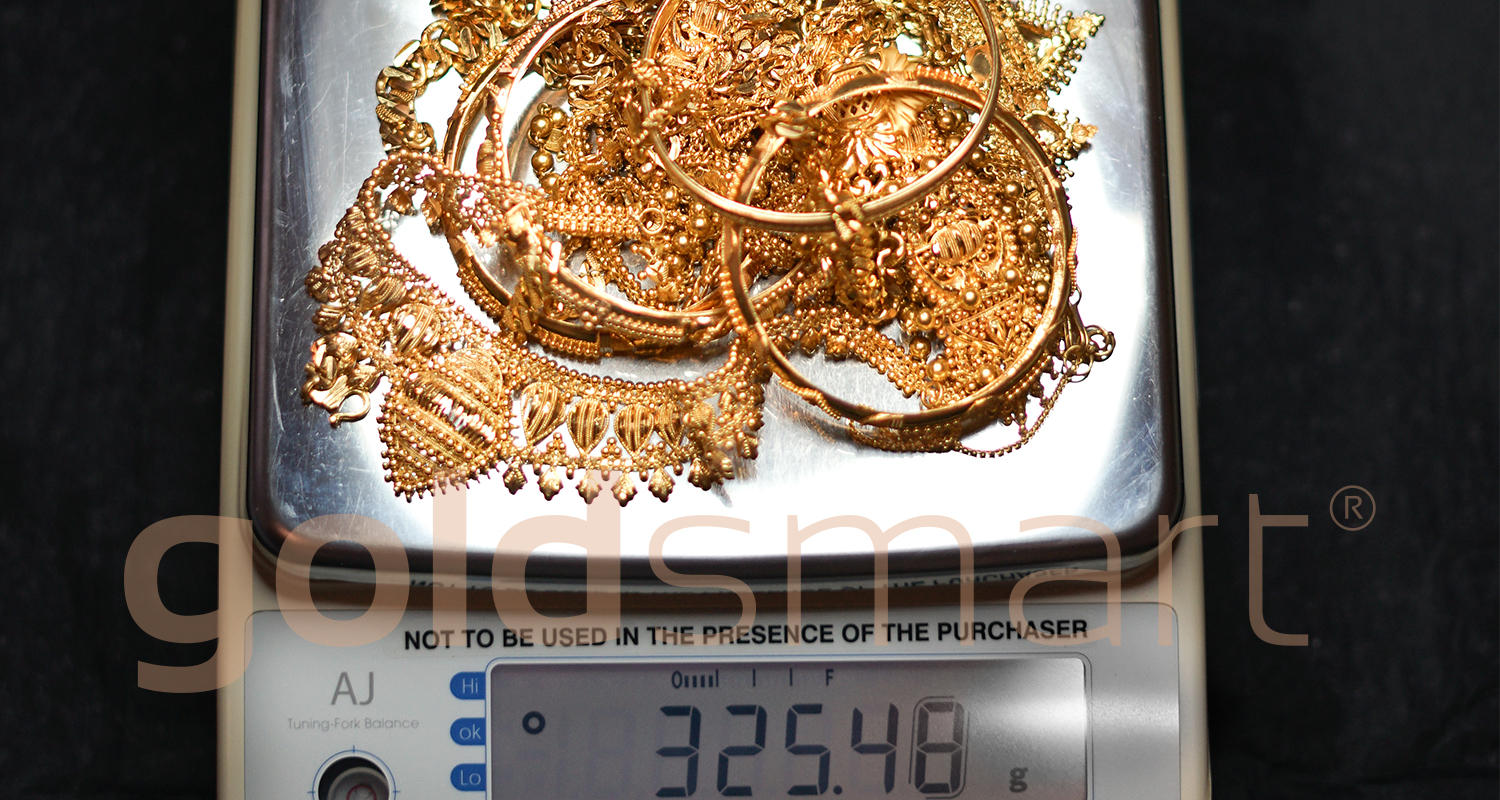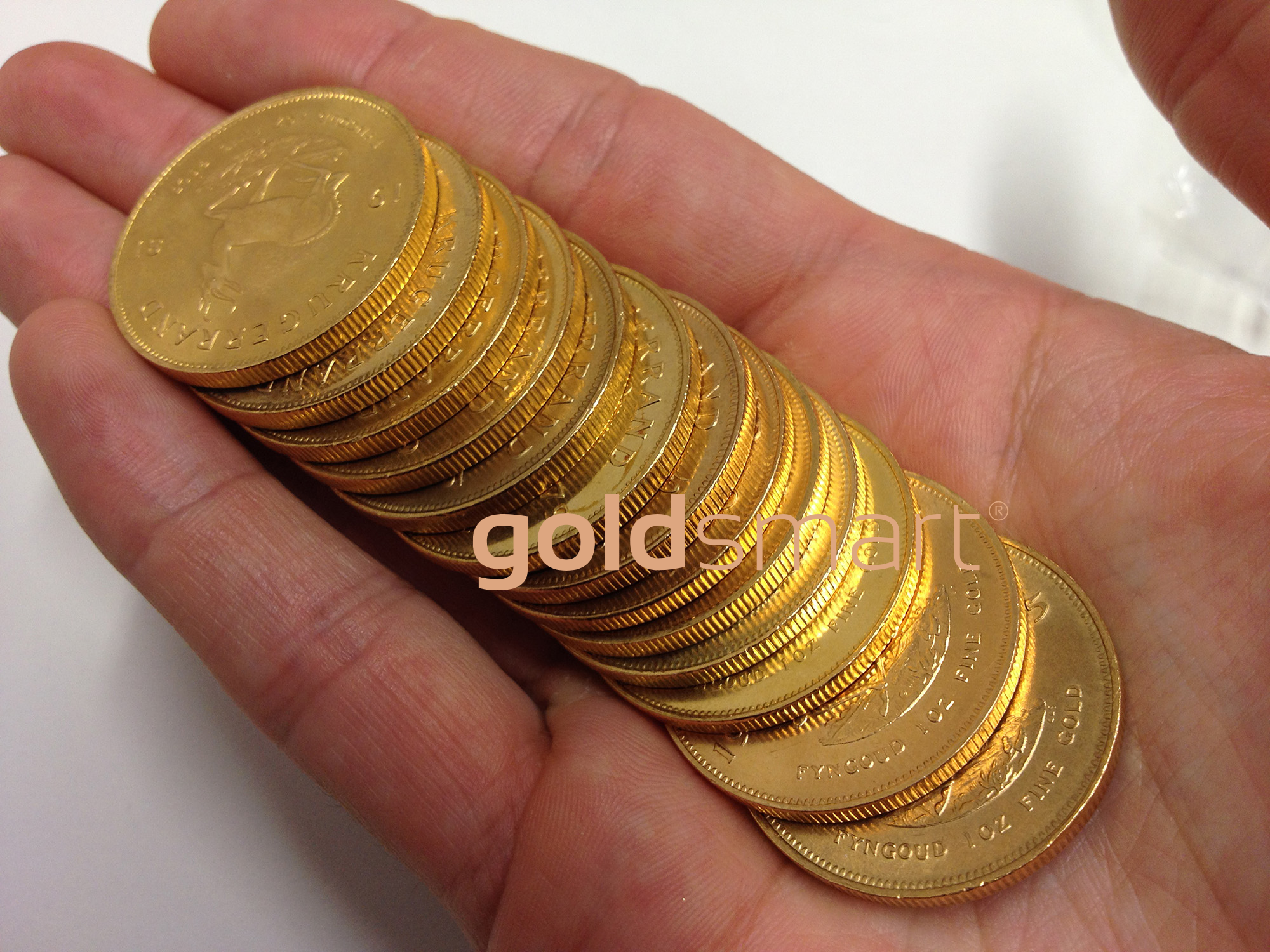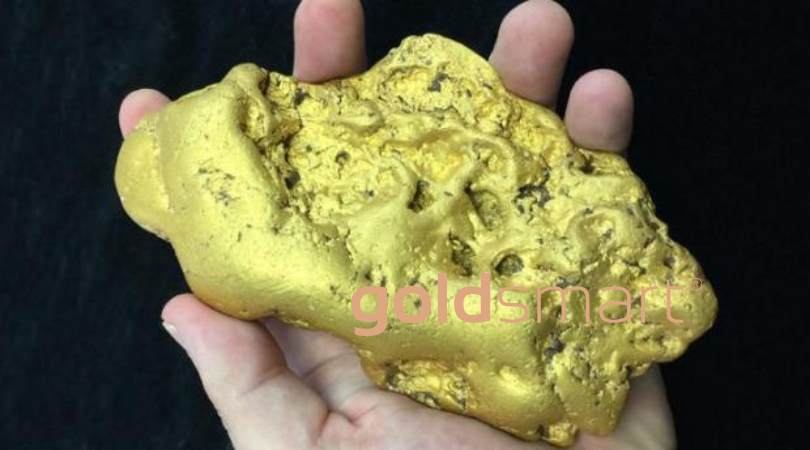
Many people believe that the means to identify gold is a pretty easy task. There are also many people who get fooled on a regular basis and duped out of their hard-earned cash as well. Gold, like many metals, has a substance to it and weight and a distinct color. However, modern production capability is also quite capable of producing alloys that look very much like real gold but are in fact not. And this common availability makes it quite possible to fool experts if played well. That’s how some 80 tons of fake gold were passed through in China in 2019, shaking the confidence of the international gold market horribly.
For the average consumer, gold bars are not likely going to be the product to worry about. In fact, most consumers opt for jewellery first and then consumables such as bullion coins. However, there is plenty of room in these categories as well to cause problems, as many buyers are finding out in recent years with fraudulent sales online through eBay and similar. And with the spike in gold demand that just keeps on rising over the last few years, many criminals are taking advantage of the urge to buy gold as their opportunity to separate people from their money.
How to Identify Real Gold
There are a number of aspects of real gold that immediately separate the precious metal from other mineral types, particularly other metals. Understanding how these tests or criteria work and, more importantly, that they are not 100 percent foolproof, is critical to identify gold correctly. Many regular testers use a combination of methods versus relying on just one approach, thereby reducing their risk further, but even these can be duped by very professional fraud rackets that anticipate known testing methods.
1. Test With a Magnet
The first approach is probably the most basic and just about anyone can apply it. Gold is not magnetic. Unlike steel or iron, for example, if you put a magnet up to gold, it will not exhibit any kind of attraction or repulsion behavior, depending which end of the magnet is being used. Gold will simply just sit there until physically moved by force. However, there are other metals that are also not magnetic, and old magnets are entirely unreliable. Using a brand new magnet recently bought from a hardware store is a must versus something decades old having sat in a drawer unused.
2. Test With Teeth
A second method of testing includes one’s teeth. As silly as it sounds, for years people have been testing gold by biting down on it. The reason being, gold is a soft metal and will deform under enough pressure which the human jaw and teeth can provide. However, this is a bit of a destructive approach to the gold, as well as being not very hygienic. The last thing most people want with their jewellery, for example, is a bunch of teeth marks over time. And this method can be circumvented as well. Gold-plated lead, for example, is also a soft metal and will deform accordingly.
3. Test With Ceramic Surface
A third approach involves un-glazed ceramic surfaces. A glazed ceramic will have a glossy surface to it, similar to a lacquer on wood. Unglazed is dull, matte in color, and a bit gritty to the touch. When gold is rubbed across unglazed ceramic it leaves a bit of a yellow streak as small parts of the metal come off on the ceramic due to friction. Pyrite, otherwise known as fool’s gold and another fake form, will instead leave a black streak on a ceramic surface. Again, however, this is a destructive method that will definitely scratch the gold being tested.
4. Chemical Testing
There is also the use of chemical testing to identify gold. This approach is very common among professional testers who locate a nondescript part of the gold to test and then apply nitric acid to it. If real gold is present, there will not be a reaction. However, if the metal is not gold, then a reaction will usually occur and be noticeable. Often times the acid will change appearance as it reacts, typically turning green in colour for a base metal. Other colours like milky white or yellow gold can signal the presence of brass as well as silver. That said, one of the most well-used methods to circumvent acid-testing involves the use of the base metal, tungsten. It has a very weak magnetic reaction, and the metal can also pass the chemical acid test. The metal can be easily crafted to known weights that standard coins are issued in, which makes the entire tungsten combination particularly hard to spot and catch, even by professional buyers. At first, many tungsten and other metal attempts were very obvious to the trained eye. However, in recent years the refinement of fake coins has jumped tremendously, often with the aid of high technology, and multiple fakes are being circulated from countries that have no rules preventing replicas from being sold and traded.

5. Weight Testing
Weight can also provide a giveaway for a fake gold possibility. Gold has a specific metal weight regardless of how it is shaped. This is a good reason why anyone buying gold in standard form should have a mini-scale with them for visual checking. So, when one is looking at a gold sovereign coin that is supposed to be 1 troy ounce of gold it should weigh exactly 1 troy ounce, no more no less. On a regular scale a single troy ounce will weight 31.1 grams. Adjustments in weight can be made depending on the state purity of the gold involved. With a 22-karat gold coin the purity is 0.9167 and the remainder is other metal alloys, which increases the weight of the coin over the 31.1 grams level. Knowing the exact weight for these deviations helps as an immediate check when a suspect coin is weighed. Amazingly, despite this easy test that one can apply with a basic scale, people are still scammed regularly with fake gold products that weight differently than their apparent and obvious supposed weight.
6. Size Testing
Size of standard products can be a giveaway as well. Jewellery is hard to compare because it’s so frequently different from piece to piece. However, far more standard pieces like coins should be a standard size, always. Buyers when purchasing in person, learn early on to bring a small set of calipers with them to quickly and easily measure the dimensions of a suspect coin and compare them against known statistics issued by government mints themselves on their coinage. Many times products are being sold that when compared to the real version are clearly off in size and dimensions. These are comparable and easy to spot physically, but they can be hard to distinguish when looking only at an online photograph for judgment before buying. In both cases of weight and size, online buying negates many of the protections possible until one actually receives the product shipped and realizes the dupe which by then is probably too late.
7. Check the Paperwork
Paperwork can help tremendously as well, but it is not foolproof. Reputable gold product and gold sellers will always provide detailed paperwork on their items for sale, from jewelry to coins to gold bars and similar. This provides critical information about the seller, the product itself, as well as its sourcing on a manufacturing basis. All should be verifiable and easy to confirm through licensing before a purchase is made as well. However, it’s not perfect. As many in the import/export world know, paperwork and manifests have been faked regularly. The key factor is whether the business or seller is stable and established, i.e. a brick and mortar storefront address and operation for example, or if they are a fly-by-night operation that works out of a P.O. box or temporary suite. When a seller can’t show with their paperwork a well-established business history, that should be a potential red flag for a buyer right from the start.
What to Expect When Selling Gold
Anyone looking to sell gold to a gold buyer should expect their material and offerings to be tested. Most gold buyers, even temporary shops, will be using a variety of testing tools that they can apply quickly and in the moment. The most common types tend to be testing a small portion of the gold with nitric acid as well as comparing the piece with known measurements and dimensions when dealing with coins or similar.
Jewellery can be harder, again because the shape and nature of it comes in so many different shapes. That said, these will also have additional features testers will look for in addition to the above criteria already discussed. One of the big categories involve manufacturer markings or hallmarks. Many jewelry manufacturers utilize clear hallmarks, badge stamps and markings that they have been approved to use. This feature provides a couple of unique pieces of information right away. They confirm the manufacture of the jewellery has come from a bona fide, licensed maker that confirms the purity of the product. Second, the stamp will also confirm whether the various import taxes have been paid on the product if imported and applicable. And third, it provides a history trail for the item where it can be traced to a production line and output batch. While marks can be faked, they frequently get missed by fraud parties not in the know about what the industry expects when a piece supposedly comes from a known brand name.
Recognizable jewellery paperwork is always a good thing to provide a professional buyer. It provides an additional layer of proof of real gold along with the testing that will be applied objectively. The combination of proof of sale paperwork plus test results often helps reinforce the veracity of a gold to a good comfort level versus selling blind gold with no history of transaction behind it at all. That said, many folks often throw away their paperwork over time, or they receive gold through estates and the paperwork has been lost before they came into possession of the jewellery. In these cases, buyers can only rely on physical testing and visible features versus anecdotal statements.

Buying Gold Safely
The most prudent and safest way to buy gold involves purchasing jewelry and coins or bars from licensed sellers that have a clear established history and presence as a business. For years this has been the case with licensed jewelry dealers as well as licensed gold selling business as well. However, with the recent spike in gold value, the online selling world has exploded. While extremely convenient, spanning distances and connecting people from all over, people really only have what is presented on a website as their information about the seller. And that ambiguity has created a lot of room for fraud that didn’t exists so much with in-person transactions and established dealers. Ergo, business history and licensing verification through independent means has become that much more important.
For example, many buyers look for a connection with the London Bullion Market (LBMA) when buying gold from dealers. LBMA sellers include certified dealers, mint sellers and gold refining operations that have been fully vetted and verified. It is one of the closest ways one can get to a guaranteed gold-buying source. New Zealand gold sellers offer a similar certification check through the LBMA as well since the organization spans 30 different countries and well over 150 different members.
Government mints and licensed mint dealers online are also extremely safe for bullion purchasing. Not only are the products measured and stamped with their quantity and purity for anyone to see, these sources are extremely controlled and regulated on what they issue, how it is sold and how transactions are documented. The products are sold and shipped directly from the mint through their own websites and selling channels, not unknown third parties.
Consumer buyers should always expect that the price markup for gold being sold over the counter will have a markup between 1.5 and 10 percent above the known spot price per ounce. Where items are smaller than one ounce, such as 1/4 or 1/10 ounce coins, the markup could be a bit higher but not by much. This is a typical profit range for a seller to recovery costs of operation. When a coin is well over this mark and in the neighborhood of a 50 percent markup, it’s a oftentimes a red flag of a problem being hidden or an overweight value that doesn’t match the actual gold being sold. These kinds of prices will appear mostly online and during times when high demand seems to be creating a buying frenzy. It’s also frequently seen through less reputable sellers such as pawn shops and payday loan businesses doing a side sale in gold items as well. Alternatively, anything below spot value of gold is either a fake, hoping to catch someone in a dupe that is clearly not gold but again buying frenzies tend to hide, or there are other fees in the transaction that will get charged to make up the difference. Buying clubs, collector programs, TV selling shows, and temporary gold sale programs working out of hotels use this angle a lot.
A similar problem can occur with graded coins. These are coins that are sealed in plastic see-through cases with an official label of an independent grader asserting the coin’s condition status, source, year, and collectability grade. Slabbed coins are most often seen in collector circles where buyers pursue gold coins not just for the gold but also the rarity of a particular year and issue. These coins can sell for far more than just the gold value involved when real and authentic, especially if very old. Unfortunately, slabbed coins also create a false sense of security with the casing and labeling, which can be easily faked by a smart fraud player. Some are done so well they are even sold at coin shows and temporary sale events where in-person experts have been duped. They will often be sold at competitive pricing, even below what the normal price would be to sell quick, convincing buyers they landed on a great deal. Being fake, the entire sale is a huge profit for the counterfeiter and a total loss for the buyer.

What to Expect from Law Enforcement
If you or someone you know as a buyer has been fooled, it might seem a waste of time to report the matter to police. In many instances it’s true that your particular case at the moment won’t be solved right away and maybe not for a few years. However, you should still file a crime report with all the details, photos, evidence and data anyways. Cases of online theft and fraud are not solved and convicted on one case alone. Police departments often compile case data and evidence over multiple instances. When there is a finally a break and the party is identified, the volume of cases they have been involved in can quickly shift a minor theft to a full blown felony status with multiple years in prison if convicted in entirety. Most of the online scams that have been broken with arrests involving online platforms like eBay, for example, have been cases were police worked together and combined their case data for an overwhelming evidence and case against the perpetrator. So, your report does matter, just don’t expect much to come of it for your particular recovery most times.
As for law enforcement blocking fakes and counterfeit gold from reaching bona fide markets, it’s been hit or miss. Products that have been moving through bulk channels like traditional shipping do get caught, and large counterfeit shipments are confiscated before they cause harm. However, the Internet has made it quite possible to move thousands of fake gold items individually, with buyers paying the cost, all over the world, and that it is near impossible to stop; it would require the postal services and courier companies to open each and every package and inspect the goods inside, which is not going to happen.
Some countries have enacted harsh laws against any attempt to knowingly create fakes, but this is not uniform, as was mentioned earlier. For example, the U.K. has laws on the books barring any fabrication of precious metal products without set hallmarks being literally stamped on the item. That includes jewelry and coins. However, the same rule doesn’t exist in the U.S., only on gold products that are imported into the U.K. And the law has no bearing on online sales, surprisingly.
On the jewellery side of things, fake gold is rampant, and the problem is well-known to law enforcement. The U.K. alone sees well over 150,000 fake gold items circulating annually. However, a key feature is the fact most of it is sold online versus in-person. So, that fact right there gives a buyer a clear and easy way to avoid such problems and related risks to identify gold– buy your gold jewellery in person.

Focus on Reducing Risk
There is no perfect way to avoid all potential fake gold fraud ever. After all, even the most diligent and experienced buyers and gold traders have been embarrassingly fooled by very elaborate gold swindles, even in recent years. That said, by using a combination of the above testing or criteria tools as well as working through licensed dealers like GoldSmart, you can dramatically reduce your risk to mistakenly buying fake gold. And that’s really the primary goal. The harder it is to make you a victim, the more likely a fraud or con is going to go after someone easier because there are simply that many fish in the sea to take advantage of otherwise.